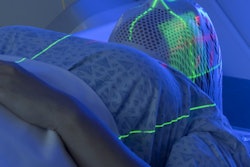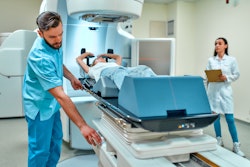Radiation therapy for breast cancer treatment leads to an increased risk of skin cancer, according to research published March 8 in JAMA Network Open.
A team led by Shawheen Rezaei from Stanford University found that the risk of non-keratinocyte skin cancer diagnosis such as melanoma and hemangiosarcoma after breast cancer treatment with radiation was more than 50% higher.
“Although occurrences of non-keratinocyte skin cancers are rare, physicians should be aware of this elevated risk to help inform follow-up care,” the Rezaei team wrote.
While breast cancer treatment strategies have improved over the decades, survivors still face challenges after treatment. One is the risk of recurrence from breast cancer metastasizing to another part of the body or being prone to developing a second primary cancer in a new location. Previous studies point to radiation therapy being a contributor to an increased risk of subsequent non-keratinocyte skin cancers.
Rezaei and colleagues investigated whether radiation therapy for treating breast cancer increases the risk of subsequent non-keratinocyte skin cancers. They focused on cancers that are localized to the skin of the breast or trunk and compared results to patients treated via chemotherapy and surgery.
The study included data collected between 2000 and 2019 from 875,880 patients with newly diagnosed breast cancer. Of the total, 99.3% of patients were women, 51.6% were aged older than 60 years, and 50.3% received radiation therapy. Additionally, 69.5% of the patients were non-Hispanic white, 11.2% identified as Hispanic, and 10.1% identified as non-Hispanic Black.
The research team reported that there were 3,839 patients with non-keratinocyte skin cancer documented to have occurred after breast cancer treatment. Most of these cases included melanoma (n = 3,419), Merkel cell carcinoma (n = 121), hemangiosarcoma (n = 104), and 32 other non-keratinocyte skin cancers (n = 195).
With these documented, the team reported a standardized incidence ratio of 1.57 of having a non-keratinocyte skin cancer diagnosis after breast cancer treatment with radiation. This means a 57% higher risk than that of the general population when considering the skin of the breast or trunk.
The researchers also stratified risk at this site by skin cancer subtype and found that the standardized incidence ratios for melanoma and hemangiosarcoma were 1.37 and 27.11, respectively.
Finally, radiation therapy treatment was tied to a greater risk of non-keratinocyte skin cancer compared with chemotherapy and surgical interventions, the study found.
The results point to the highest risk of skin cancer after radiation treatment being localized to the skin of the breast or trunk, the study authors highlighted. They called for future studies to investigate the effects of radiation dosage and genetic profiles of breast cancer patients as possible contributors to this heightened risk.
“Our findings may help inform physicians that their patients with breast cancer are at an elevated but small risk of subsequent non-keratinocyte skin malignant neoplasms after radiation therapy,” the authors wrote. “There is a need to better define and incorporate subsequent risk of malignant neoplasms within patient consultation processes and survivorship follow-up care plans.”
The full study can be found here.



















